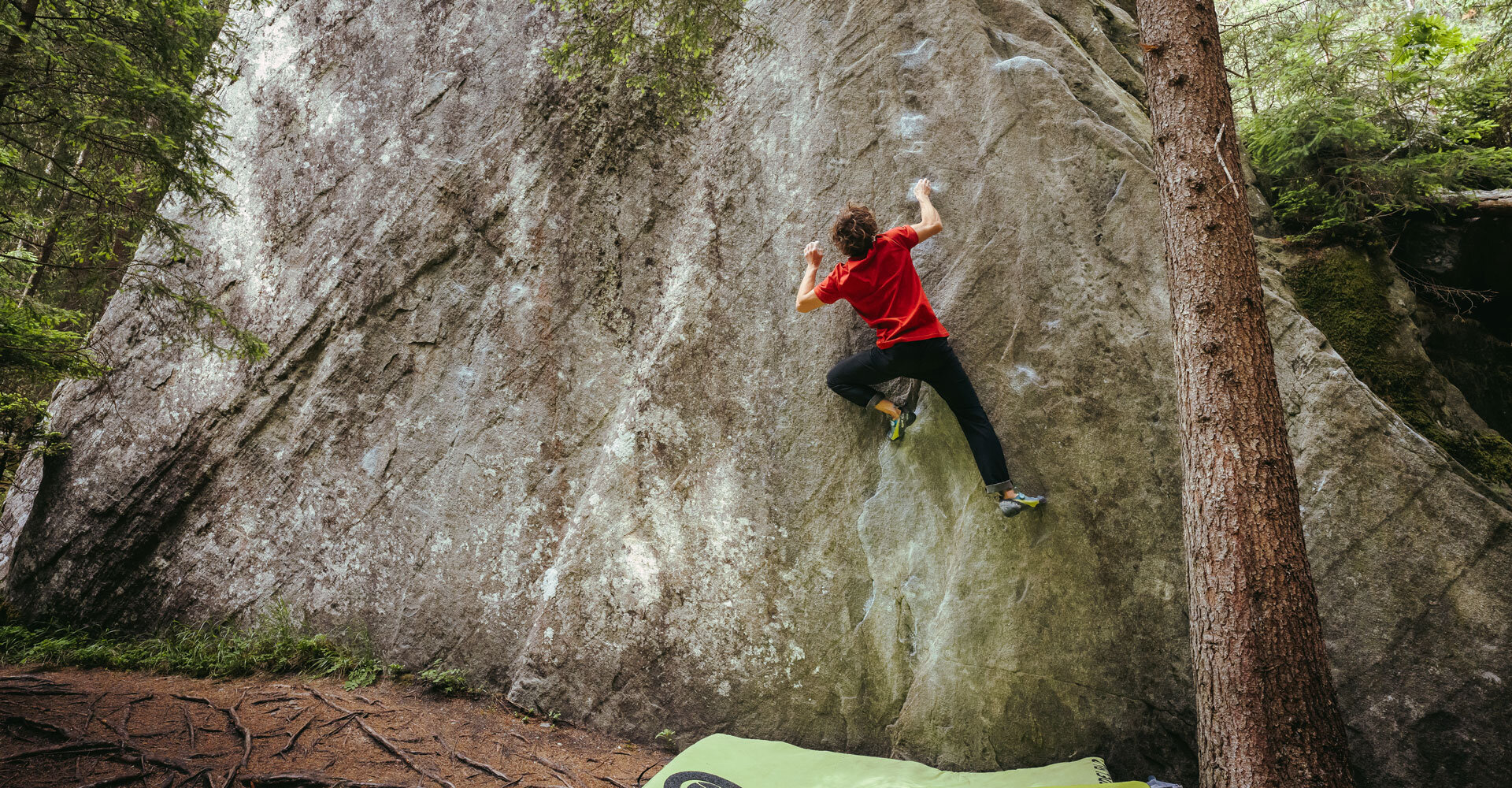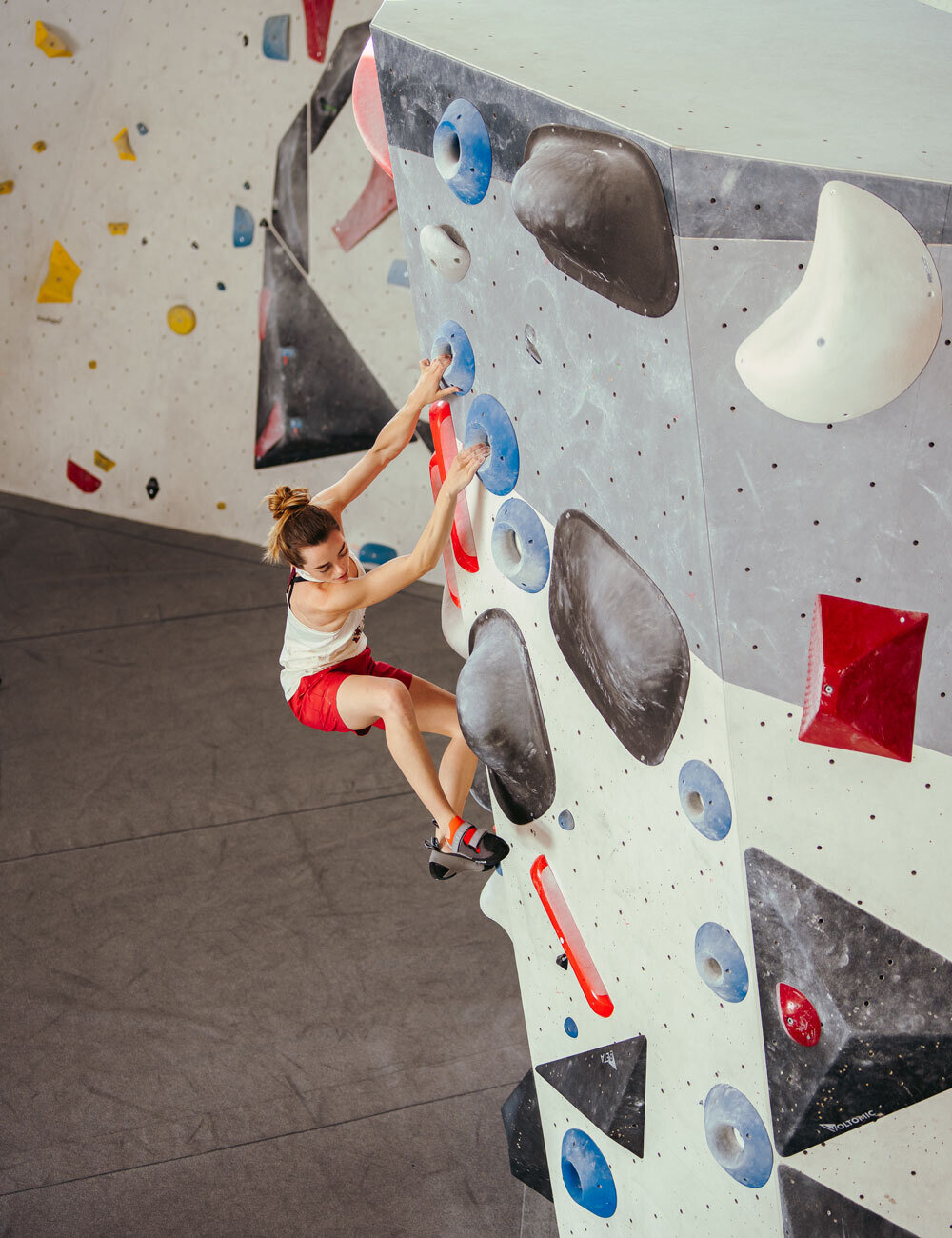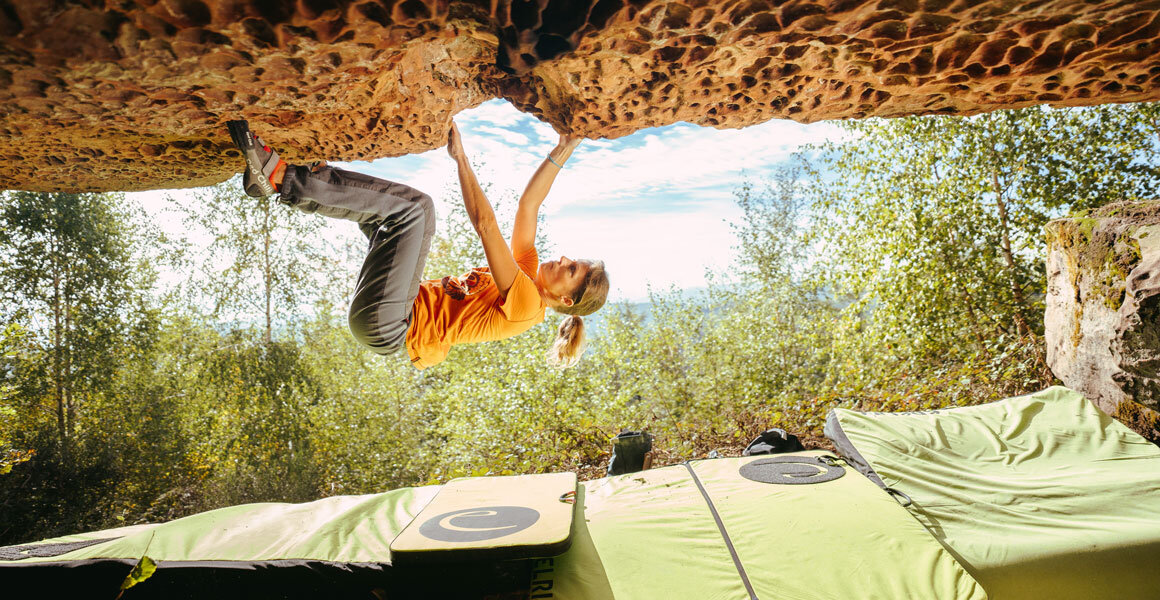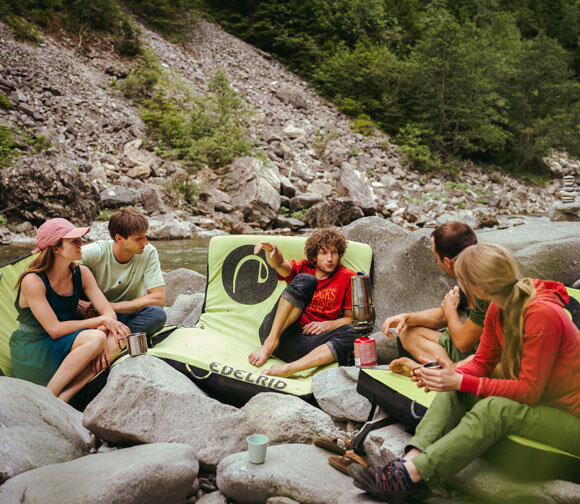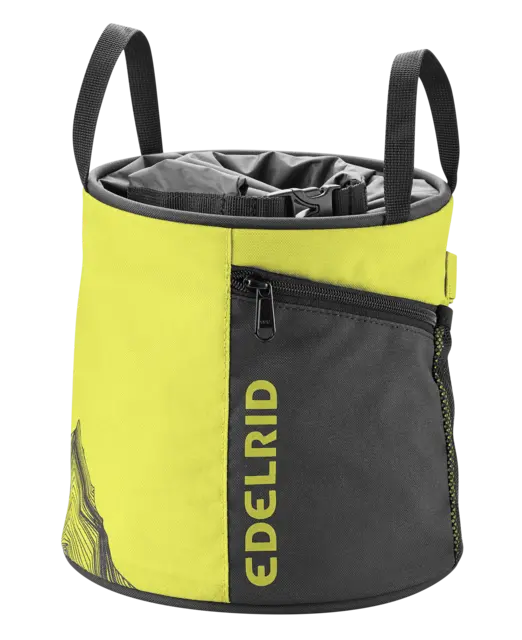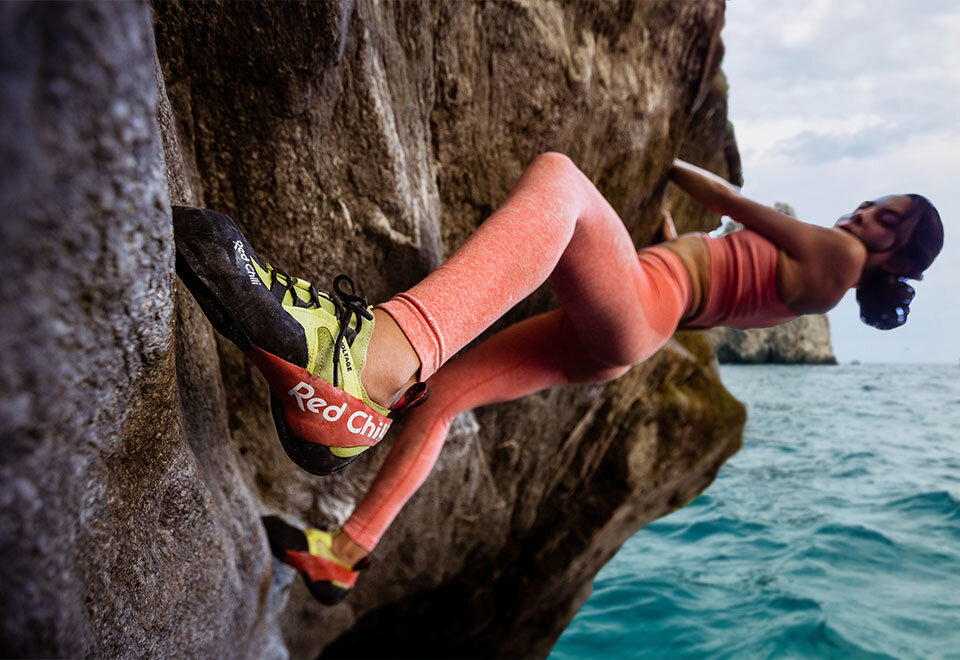A versatile sport for newcomers and pros alike
The birds are chirping and gentle rays of sunshine seep through the leaves of the oak and pine trees. Just another two moves and you’re at the top. You screw in a side grip and pull on a ledge. Your left foot places a heel hook. You reach a sloper with your right foot, bring your left hand across, push yourself up and stand on one of the hundreds of sandstone rocks scattered throughout the fairytale forest of Fontainebleau. Just a short distance from Paris, this is one of the world’s bouldering Meccas and one of the central places from where the sport developed.
Bouldering is climbing at jump height with thick mats that provide a soft landing if you fall. It’s about solving a problem, about the most challenging moves, which are generally harder than those when sport climbing.
The holds are often almost impossible to grip. The problems not only require mobility, strength, and technique, but also creativity and imagination. When bouldering, you try to shift the boundaries of what is possible, ideally with a group of like-minded people. After all, bouldering is also a very social, communicative sport—one where people help each other, try multiple solutions, and motivate and spot each other. Climbers make sure others don’t hurt themselves if they fall by gently guiding them to the mat. Bouldering is a cool mix of giving your all, a full-body workout, and chilling with friends. It’s a sport that is undertaken by not only specialists but also sport climbers, alpinists, and recreational athletes who are new to climbing. As such, it’s no wonder that so many people love it.
